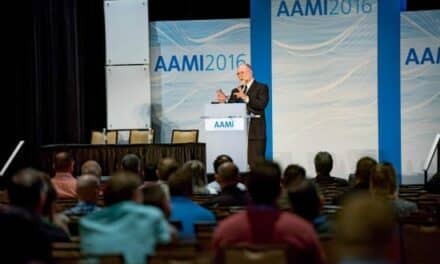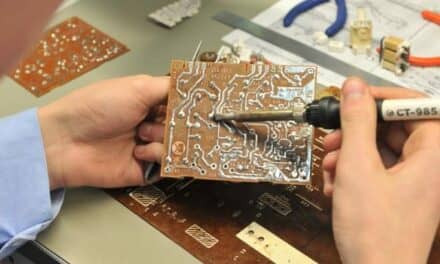Establish an agreeable balance between workload and staff—and even justify new hires—with the right research and statistics.

Even if the need is desperate, managers are often left feeling that justifying a new biomedical equipment technician (BMET) is a task equal to juggling charged capacitors. Sure, it’s possible, but is attempting it a good idea? The good news is that if it is tackled strategically, the process doesn’t have to be quite so daunting. The key is knowing how to approach the issue. For departments feeling overwhelmed, the first step is determining whether an additional full-time employee is really the best solution.
Determining Need
Over the years, attempts have been made to develop a formula that biomed managers could implement to provide them with the ideal number of employees required to run a department. Despite the cumulative effort, however, it often proved to be an exercise in futility.
“There may be [a formula], but I’ve never found one that works across the board in all facilities,” says Robert M. Dondelinger, CBET-E, MS, medical equipment manager, US Military Entrance Processing Command (North Chicago). “Neither has the Army Medical Department; and believe me, they’ve tried.”
The Army isn’t the only organization trying to develop a formula to determine need, and resulting calculations have attempted to establish staff levels based on BMETs per beds or occupied beds. Others have looked at BMETs per square foot, the number of operating rooms, or pieces of equipment—none of which work for the long term.
“Any benchmarks keep changing as technology advances and the delivery of health care changes,” says James Wear, PhD, managing director, Little Rock Employee Education Resource Center (Little Rock, Ark), who clarifies that while historically, specific ratios have been put in place, “numbers such as these might be useful for large organizations, but not generally for individual hospitals.”
The numbers don’t stick primarily because there is a myriad of variables in play, including the type of equipment, how much it’s used, how often it’s serviced, and the skill level of techs. Because so many factors influence the optimal number of techs necessary to keep the facility up and running, creating a “one size fits all” approach is nearly impossible.
“Hospitals have a different mix of equipment than medical centers—with different levels of difficulty in their maintenance and different levels of expertise required to maintain them,” Dondelinger says. “Likewise, manpower requirements are different between the two facilities, with the medical center requiring more staff training by the biomeds than a hospital.”
The same can be said for differing facility types across the board. Yet, while specific ratios are difficult to achieve, there are several tried-and-true methods for striking an agreeable balance between workload and staff.
One of the most reliable ways to determine if understaffing is truly an issue is through a careful assessment of the facility in question. By taking a detailed survey of all equipment and recording the time required to maintain each piece, biomed managers can get a handle on the scope of their responsibility and a realistic picture of the man-hours required to meet established service goals. When performing the evaluation, managers must include anything that’s placing demands on the biomed team.
“Even equipment that’s contracted out needs someone to administer and oversee that contract,” Dondelinger says. “If the biomed has the responsibility for the contract, that’s another personnel requirement that needs to be filled.”
The canvas also should note specifics for each machine, such as its age and required level of preventive maintenance, taking into account the status of the equipment (age, usage frequency). Simply touring the facility with a checklist is not likely to produce the most accurate results. Because these factors are constantly evolving, monitoring the track records is the key to accurate determinations.
“Most of these items are changing, so we have a moving target,” Wear says. “The best approach is to [start] with the history of work orders.”
But they don’t tell the whole story. Training is another important consideration, alongside a host of other demands that pull BMETs out of the “on-site” rotation. When analyzing ideal staffing levels, managers also must consider the time that existing staff will be out of the office for vacations and sick days, as well as meetings and conferences—often less noticeable because these absences are spread throughout the year, the accumulated time away from tending to equipment can have a significant impact.
“The number of technicians is always a work in progress,” Wear says. “A good manager will keep reviewing the workload of their technicians and supplement with contracts as needed, or see how it can be reduced by the use of better techniques.”
Maximize Existing Staff
In addition to helping build a database of man-hour requirements, taking a comprehensive survey of equipment in the biomed’s area of responsibility can help managers align the skills and training of the BMETs on staff with the tasks at hand.
This not only helps managers get the fullest potential from existing BMETs, but also goes a long way toward demonstrating that every available option has been tapped before asking for more staff. It is also a good way to ensure that the staff’s training is keeping pace with the department’s acquisitions.
“When additional equipment is purchased, the biomed manager must review the workload and determine if additional staff is required to maintain the additional equipment,” Wear says. “With replacement equipment, additional staff is probably not required, but new skills may be.”
Once there is a comprehensive list of the work that needs to be done, biomed managers should catalog the skills required to get the job done and then take an unbiased look at the strengths and weaknesses—both individually and collectively—of the current staff of BMETs. The next step is to align people with the tasks that maximize their strengths. In some cases, this is as simple as reassigning job duties; for others, it requires training.1
Making a New Hire Happen
Biomed managers who find that after cataloging equipment and tracking orders, their department truly is shorthanded face one major hurdle: getting another full-time employee approved by the facility or hospital management.
Approach this obstacle with one thing in mind: The only way to get approval to hire additional staff is to prove undeniably that it is necessary.
“Solid figures are required to demonstrate the need for additional staffing,” Wear says. “The data collected to determine workload is one source of data needed.”
That is the good news—the effort put into determining staffing levels is the same evidence that can prove the case for another full-time employee.
Managers in charge of budget are tasked with controlling expenses and making the institution profitable. For many, hiring a new employee is viewed strictly as another expense. In addition to straight salary and overtime, the budget for new employees has to include allowances for training, benefits, and lost production during the learning curve typical with any new hire.
With some research and statistics, however, a manager can demonstrate that a properly trained biomed will actually benefit the facility’s bottom line. Bringing attention to the areas where the contributions of another full-time employee will more than compensate for the money spent to bring them onboard can justify a new hire.
Because they are becoming increasingly common and, in many cases, increasingly costly, service contracts provide a prime opportunity to demonstrate the savings a full-time biomed could bring.
“One of the best techniques to add staff is to be able to cancel, reduce, or avoid service contracts,” Wear says, “especially if it takes some time for a vendor to come for the repairs.” Before offering this suggestion, Wear cautions, be certain biomed staff can perform all necessary repairs after the contract is canceled.
Another effective approach is to position costs relative to the amount the department could charge an external customer for the same services. Though very few in-house biomed teams bill internal clients for their services, this type of analysis can illustrate the value of the work being performed. It also can quantify the savings realized by not having to bring in outside help to get the work done.
“It can go a good part of the way toward justifying staff size to senior management,” says Robert Stiefel, MS, CCE, director of clinical engineering, University of Maryland Medical System (Baltimore). “But only if you either charge for your services or provide the figures that show what you would have charged if that were your practice.”
Yet another tack is to document the cost-efficiency of having a BMET immediately available, as compared to the revenue lost when equipment is inoperable while waiting for repairs to be performed by the original equipment manufacturer’s service department.
If the computed tomography (CT) scanner goes down, for example, there’s a significant revenue loss for the facility. Considering that in 2004 the average net revenue per CT study was $175,2 having the system down for a few hours can have a significant impact on the hospital’s overall revenue. In many cases, it is well worth the annual salary for a biomed tech to make sure the revenue-generating systems in the hospital function without any downtime. The equation is simple, but effective.
Other Options
Unfortunately, sometimes even diligent planning, irrefutable documentation, and the most convincing arguments do not result in the hiring approval desired. The good news is that all hope is not lost for persistent biomed managers who want to provide relief to exhausted BMETs.
Seeking other budgets is one resolution—in particular the fund earmarked for outsourcing. Off-loading tasks with special circumstances, such as off-site work or limited–time-frame projects, can lighten the load for full-time staff while maintaining service goals. Once a relationship is established, it is also possible to use that person specifically as a “substitute” when a full-time staff member is absent due to training or illness.
For facilities taking this route, it’s important that the biomed manager interview the technicians who will be assigned to their facility. It is critical to ensure that they are not only technically qualified to work on the equipment, but that they are also willing and able to meet the established customer service, safety, and compliance standards.3
Regardless of what eventual path a facility takes to ease the pressure on its BMET team, the rewards are generally worth the effort. Whether through training, restructuring, or hiring, expanding employees’ skills or responsibilities without overloading them inevitably increases their dedication and commitment to the task at hand4—creating a win-win situation for everyone involved. 24×7
Dana Hinesly is a contributing writer for 24×7.
References
1. Wear JO. Personnel management. In: Dyro JF, ed; Clinical Engineering Handbook. Burlington, MA: Elsevier Academic Press; 2004:206-211.
2. Stockburger WT. CT imaging, then and now: a 30-year review of the economics of computed tomography. Radiology Management. 2004;26(6):20-30. Available at: http://www.ahraonline.org/education/CTimage/CTimage.pdf.
3. Moyer W. Meeting in-house needs with outside assets. Biomed Instrum Technology. 2004;38(5): 367-368.
4. Snyder E, Grasberger M. Understanding motivation and employee satisfaction. Biomed Instrum Technology. 2004;38(4):283-287.



